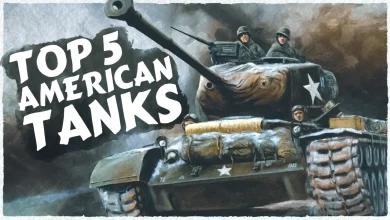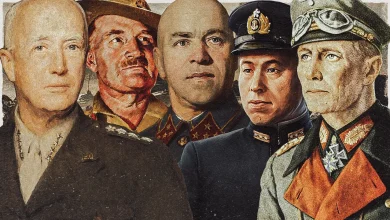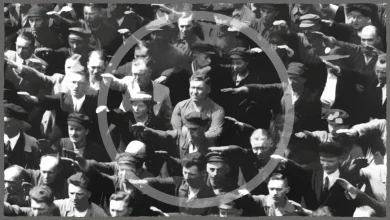MG 42 – Hitler’s Buzzsaw
In the Second World War, there were few firearms that instilled such paralyzing fear as the Maschinengewehr 42 or MG 42. Used extensively by Nazi Germany's armed forces, the Wehrmacht and the Waffen-SS. It was intended to replace the MG 34 because it was more expensive and took much longer to produce. However, both of these weapons saw service until the war's conclusion. Designed to be low cost and easy to manufacture, it's been regarded by many military historians as one of the finest general-purpose machine guns ever made.

The design of the MG 42 began in 1937 by Mauserwork to substitute the MG 34. Although it possessed a reasonable rate of fire, the MG 34 had several fundamental drawbacks such as sensitivity to extreme weather conditions, dirt, and mud, and the high-quality metal alloys resulted in skilled labor requirements, high costs, and a relatively slow rate of production.

The MG 42 consisted of stamped and pressed hardened carbon steel metal with only the important parts the weapon comprised of solid steel with spot welding and riveting to connect parts, this required less machining and fewer grade steel alloys that were becoming scarce in Germany during World War II. It was much simpler to construct and took roughly 75 man-hours to complete as opposed to 150 man-hours for the MG 34.

The MG 42 was first deployed in May 1942 by the German Afrika Korps and then in mid-1942 on all fronts. It ideally had a six-man crew: a commander, a gunner, and a soldier who carried the weapons tripod. Three troops carried additional spare barrels, ammunition, and tools as the weapon easily overheated and chewed through vast quantities of munition. It became the standard infantry machine gun until the end of the Second World War, utilizing non-disintegrating metallic linked belts and firing the 7.92mm Mauser round. The weapon was air-cooled and consisted of a bipod that could be deployed on a Lafette 42 tripod. However, its biggest difference from other machine guns of the time was its blistering rate of fire.

The MG 42 could spit out a staggering 1200 to 1500 rpm. The reason why this machine gun fired so fast was not just from harness recoil, it used gas pressure from each fired round to speed up the reload then the rollers on the top would guard each round into the bridge quicker. The distinctive tearing sound the weapon made due to the high cyclic rate led to a variety of nicknames such as the buzzsaw, the Knochensäge which is German for the bone saw, and the Soviet Red Army called it the linoleum ripper.


The impact this noise had was immense, the mere sound of the weapon firing took a psychological toll on the troops and the situation became so severe that the U.S Army had to produce a special training film to boost the morale of the infantry. The film downplayed the German machine guns’ lethality to infantry replacements that had not seen combat with the narrator stating that whilst the weapon possessed a high rate of fire, it was not as accurate as the American machine guns. However, the reality was, the MG 42 hit hard.
After the conclusion of World War II, large numbers of the MG 42 were captured by the Soviets along with original technical drawings of the weapon, these would find their way to Czechoslovakia and Yugoslavia. Rheinmetall in Germany reversed engineered the MG 42 in the 1950s and it was designated as the MG 1, chambered with the 7.52mm NATO round. It was launched in 1958 and saw service with the newly formed West German Army, the Bundeswehr. Simultaneously, wartime MG 42s that chamber the 7.92mm Mauser round were converted to the 7.52mm NATO, they were designated as the MG 2. In 1968, the MG 3 was introduced and ended production with further improvements to the weapons muzzle device, bipod, and bolt. The MG 3 is still in service in Germany today as a squad support weapon and as a standard secondary vehicle-mounted weapon such as the Leopard 2. The MG 3 is also used by many armed forces throughout the world such as Italy, Sweden, and Canada.



